RESTAURANT VISIONARY Christine San Diego In-Depth
Take yourself back to the late 1990’s; Sisqo’s “Thong Song” and Britney Spears “…Baby one more time.” were at the top of the charts, Starbucks had just launched its first store outside North America, Fried Calamari [squid] had just become ‘a thing’ in the US and “Sex in the City” had just premiered [June 1998] and instantly made ‘The Cosmopolitan’ the most popular cocktail around the world. And, the Philippines had just entered into an economic renaissance which made it the fastest-growing economy in the world –still to this day.

On-Location at: Damiana’s Kitchen
It’s about that time, Christine San Diego returned home to the Philippines, from a highly-successful culinary career in America. She brought a keen sense of service standards and trail-blazing concepts with her; which revolutionized the highly-competitive bar and restaurant industry in the Philippines. Christine’s perspective was fresh and unique, which resonated with consumers and put her ventures; Bistro 110, Flute Wine Bar, Balcony, Absinth and Damiana’s Kitchen, as well as, her consultancies on the national map.
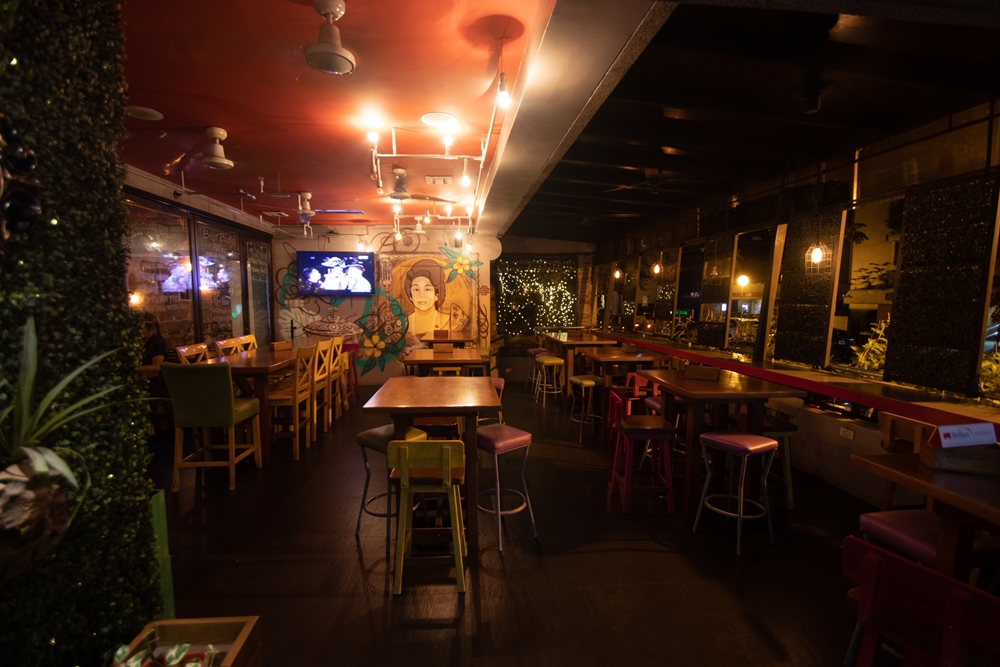
On-Location at: Damiana’s Kitchen
In addition to great cuisine, décor and a unique business model, her attention to front-of-the-house details and an award-winning guest experience protocol are her secret weapons.
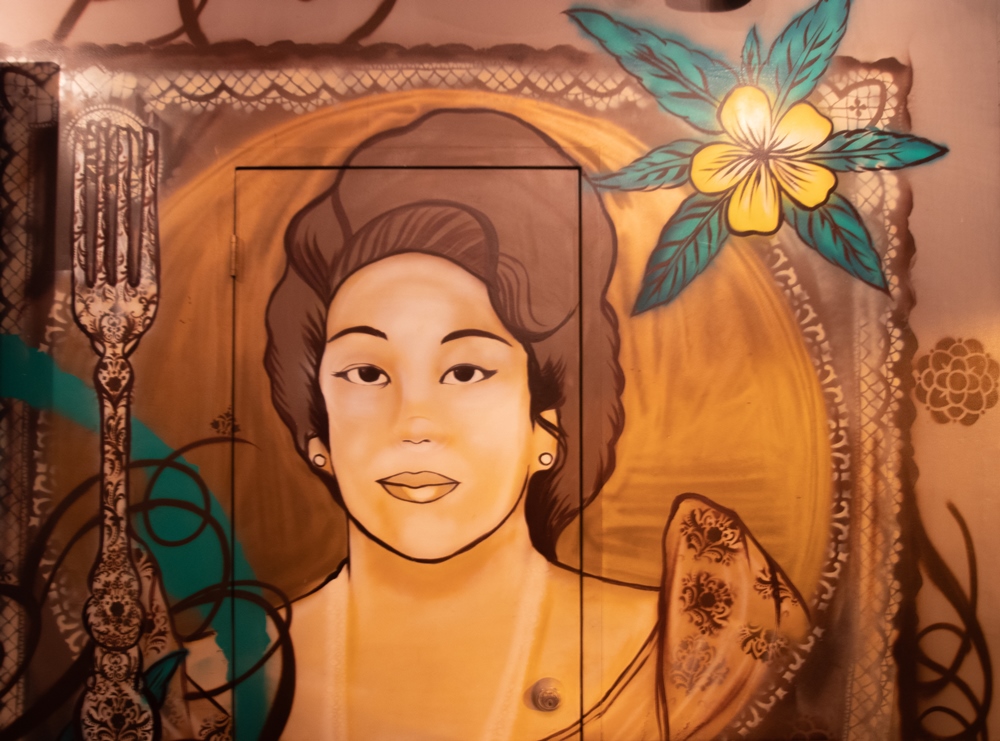
On-Location at: Damiana’s Kitchen
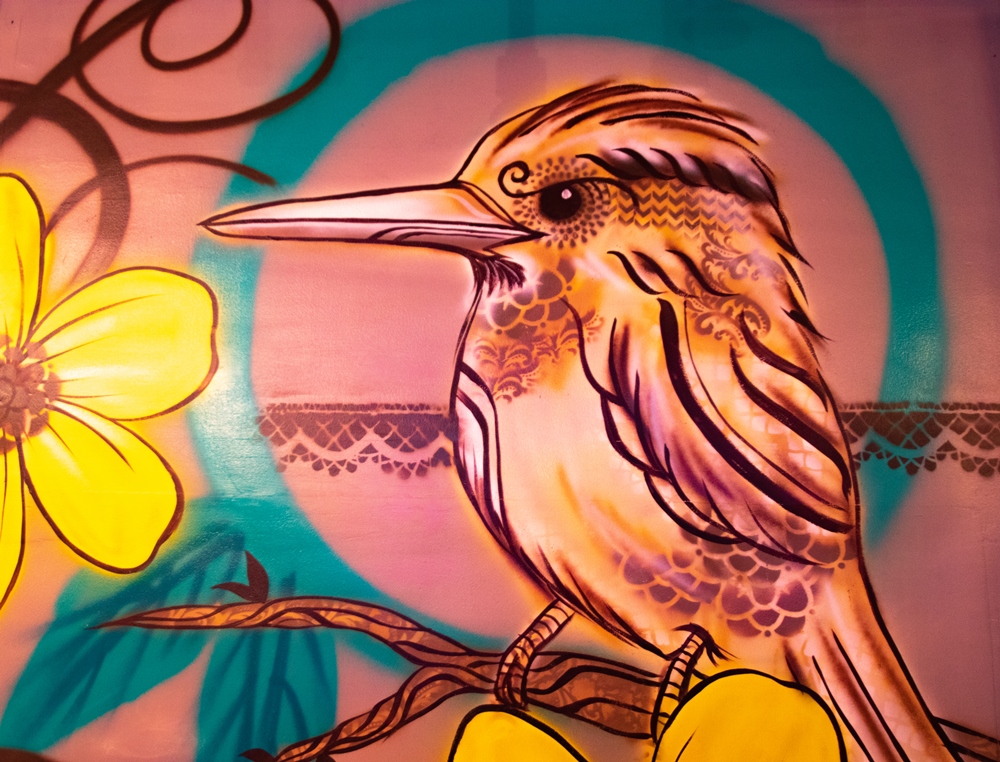
On-Location at: Damiana’s Kitchen
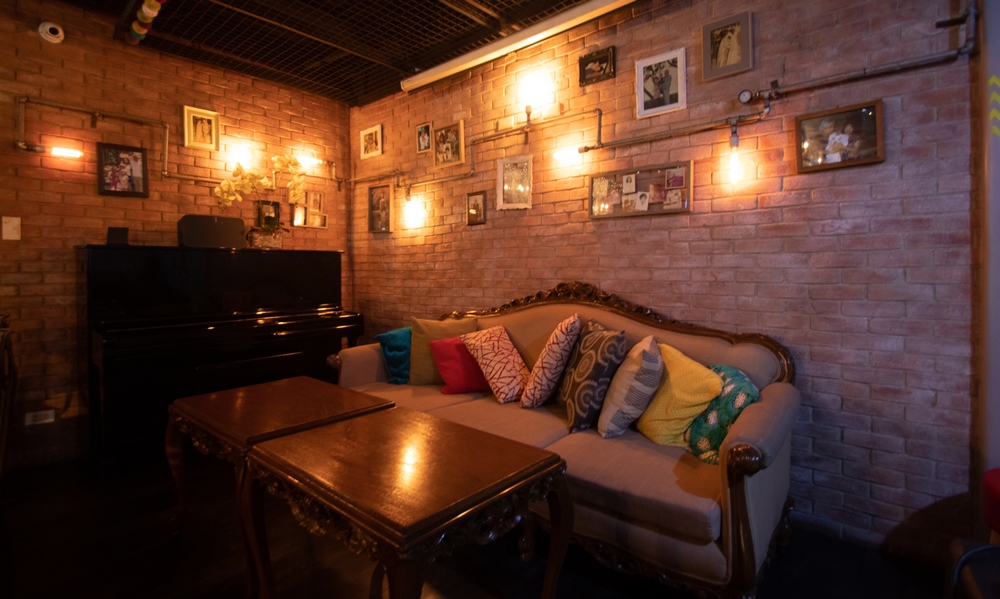
On-Location at: Damiana’s Kitchen
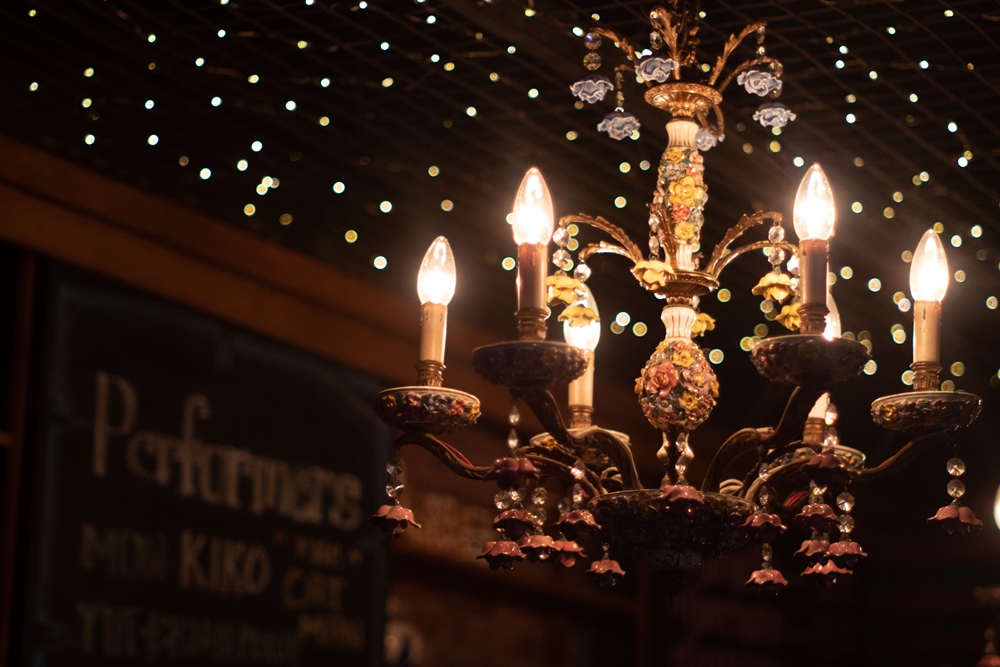
On-Location at: Damiana’s Kitchen
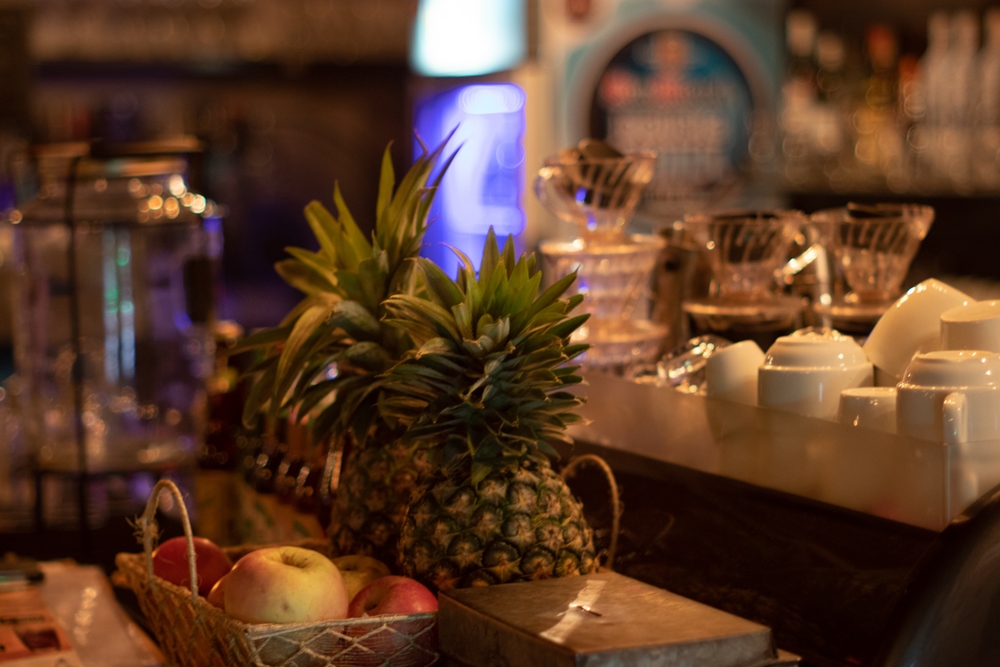
On-Location at: Damiana’s Kitchen
RANGGO sat down with Christine San Diego, the serial-entrepreneur behind Manila’s highly successful Damiana’s Kitchen, for an in-depth conversation about the new food and beverage industry in the Philippines. We talked all things food: the challenges, the inspirations and the power of great customer service standards.
RANGGO
Did you always intend to become a consultant in the bar and restaurant industry, or is it something that developed organically?
Christine
It’s something that developed from being a bar and restaurant owner. I opened Bistro 110 in 1998 when I moved back to the Philippines, after working for a number of restaurants in San Francisco. I partnered up with my cousins and opened a California-style bistro. After that I opened a gastro-pub.
The consultancy work came along through friends; they saw how well I was doing in my business and they knew that I would take care of their business as well.
RANGGO
What bars and restaurants have you worked with…as a consultant?
Christine
My first consultancy was Juice Bar, in Boracay. Many people actually thought I was an owner or Partner, because I was always there.
The second was for The District Boracay, working on the three restaurants that they have there now.
RANGGO
Why do you think Juice Bar chose to hire you as a consultant?
Christine
They trusted me firstly. And, they knew that I will take care of the business as if it were my own. I think the difference between me and a ‘Professional Consultant’ is that I treat the business like I do my own. I give the hours that are needed rather than hours that I’m paid for in a contract…I give a lot of hours.
RANGGO
So, how do you elevate these establishments, so that they are a ‘cut above the rest’?
Christine
With Juice Bar Boracay, I was there every day. This helped me to come up with a lot of PR and Marketing gimmicks because I was there to see the results. At that time it was crucial that owners were there to take care of their guests. That was one of the main principles that I actually followed; to be present. As Filipino’s we often like to know, or see, the owners of the establishments we visit, because then it feels more comfortable; it feels like home. That’s an important part of customer service.
RANGGO
And what about your own restaurants, what do you do differently to keep your restaurants ahead of the game?
Christine
It was easier at the time when we first opened here with Bistro 110 because it was new. But I do a lot of research: I look at menus; what’s trending, what’s good, what we don’t have in the Philippines yet. I always try to be a pioneer, from the food to the drinks, so that I’m different. There’s a lot of competition and for me to compete it always has to be with the food and beverages that we offer.
RANGGO
How do you research? Do you know what cuisine you want and look to see if it’s already here in the Philippines?
Christine
Well…I travel a lot and I lived in the States for a long time. So, what I first brought here when I opened Bistro 110, was from my time in the States. Everything that I was trained to do in the States, that’s what I brought with me. Once here I used the internet but I also travelled a lot, and took ideas from that.
RANGGO
How did you come to choose the Bistro’s and Bars that you opened?
Christine
The first business, Bistro 110, was just a Bistro. -The definition of a Bistro is that it’s fast food, it’s not a café.
RANGGO
But it’s not quite a restaurant…
Christine
Yes, it’s a very casual restaurant. With the premises being located in the Financial District, whatever we did had to be fast service, good food and above the cafeteria level. So Bistro 110 was the perfect business model for that area.
RANGGO
And after Bistro 110?
Christine
After Bistro 110, I opened Flute Wine Bar in Salcedo Village. There were no Wine Bars at that time and I partnered up with Ralph Joseph, of Ralph’s Liquor Store. He was the one who came up with the idea; there was nothing like that here [in the Philippines] at the time. It was partly an avenue for him to be able to sell on his wines; customers got to taste his wines before buying.
…the design, the look, the feel, the menu, the food all had a New York Bar feel. A lot of people said Flute reminded them of bars in New York; it became known as the ‘Sex in The City’ Bar. We were serving Cosmopolitans and Martini Cocktails inspired by the characters in the series, we were showing Sex in The City every Tuesday night and there were different themes and concepts nightly.
RANGGO
We remember people talking about it, but we never made it there -which is a regret.
Christine
Flute was very, very different to the usual bar or night scene in Manila.
After Flute, Ayala Greenbelt offered me a space in Greenbelt 3, 3rd floor. So we came up with Absinth, which was a dance bar. It wasn’t really a club because we didn’t have the equipment for it to be a Nightclub or Disco. It was a dance club; a bar that had DJ’s and a space to dance.
RANGGO
Another Bar people talked about. Absinth was very popular almost from opening, how did you achieve that so quickly?
Christine
We had promoters already. We had promoters for each night and, of course, the DJ’s also promoted for themselves. The whole Dance Bar scene was new, starting with Venezia. Absinth was the second to open, and then Nuvo… then, Temple and Restaurant 12. That was the scene; it needed to be a restaurant, and a bar and a dance floor at the same time. They were all located around Makati and people would skip from one bar to another.
RANGGO
So was it all word-of-mouth advertising?
Christine
Well, of course there was no Instagram or Facebook then. There was a lot of leafleting, flyers, telemarketing, word-of-mouth, getting emails or telephone numbers and blast texts. That’s how we attracted people
[back then]
. Wednesday Nights we had Hip Hop Night, so most of the ballers [basketball players] -the popular ones- were there, so that really brought people in. Thursday night was a different type of scene; we had different DJ’s playing different genres. It was a diverse network from artists through to the LGBTQ community. No one else was offering that kind of night, it became such an open place where people could be comfortable and enjoy the night. It was one of the things that made Absinth different from other bars.
RANGGO
So what came after Absinth?
Christine
After Absinth, came Balcony Gastro Pub. Balcony, was the first Gastro Pub in the Philippines; I was actually the first one to register ‘Gastro Pub’ as a business type with the SEC. Initially they wanted me to register it as a ‘Gastro Pub Restaurant’ but I explained that I couldn’t do that because Gastro Pub is not a name, it’s a type of restaurant. It took a lot of time explaining and persuading them that ‘Gastro Pub’ is a term like Restaurant, Bistro or Café.
RANGGO
And what makes a Gastro Pub different from a restaurant?
Christine
A Gastro Pub is like a pub or beer garden, with good food. It’s funny but I actually received a letter from a business, which was called Gastro Pub, saying I had to give up the name Balcony Gastro Pub because Gastro Pub was their name. But they weren’t actually a Gastro Pub and it’s not a name, it’s a type of establishment. Once Balcony opened, Draft Gastro Pub came along not long after. [Gastropub: noun gas·tro·pub | \ ˈga-strō-ˌpəb \ Definition of gastropub : a pub, bar, or tavern that offers meals of high quality.]
RANGGO
How long was Balcony open?
Christine
Balcony lasted about 5-6 years.
RANGGO
How did you market Balcony, with Gastro Pubs being a new concept to the Philippines?
Christine
By the time we launched Balcony, it was already the Social Media Age. It was very easy because we already had a niche market here by then. The location itself was very important; we were very busy Monday through to Friday, with Friday being the peak. Then Saturday, it would slow down as people would go somewhere else. That was already the trend in Legazpi Village.
We were among the first in the street really; there was a rock bar before and, after we opened, a fine dining restaurant came along. But it was after we opened Bistro 110 that everyone else started opening, because they saw that we had opened a restaurant on the ground floor.
RANGGO
You couldn’t have a restaurant on the ground floor before?
Christine
MACEA (Makati Commercial Estate Association Inc.) had this rule that restaurant establishments couldn’t be leased on the ground floor of their properties.
RANGGO
So, how you were able to open Bistro 110, if it was on the ground floor?
Christine
I successfully argued that we weren’t on the ground floor. Bistro 110 is actually elevated so we’re not truly on the ground floor. We also owned the property and lease. It was hard though, I really had to fight for it. We had people coming in and taking photos, and one time they brought the Police with them. I told them they were the ones breaking the law because they were trespassing on property that didn’t belong to them. I would also point out that we weren’t on the ‘Ground Floor’.
Once we opened so many people came; that’s why it lasted that long. Firstly it was because we sold comfort food, and we were coming up with different menus all the time. It was smaller and only had a small outdoor area, but back then it was still okay to smoke inside. Lunch time was so busy, we’d have everyone from Advertising Agencies and the businesses located around the area. There were a lot of walk-ins, often through word-of-mouth.
It was the same when we moved on from Bistro 110 to the gastro pub; it continued. We only had a break to renovate and put in a balcony. And that was why it was called Balcony; because we added a balcony, which became the smoking area. It was a better experience for our customers who didn’t smoke.
RANGGO
What came next after Balcony?
Christine
After Balcony there was a short-lived Japanese restaurant called Red Dot, which only lasted for 1 year. I was just a partner and there were two other partners and my brother. My brother and I weren’t really that involved with it. It didn’t work out for various reasons and we decided to close.
RANGGO
And then came Damiana’s Kitchen?
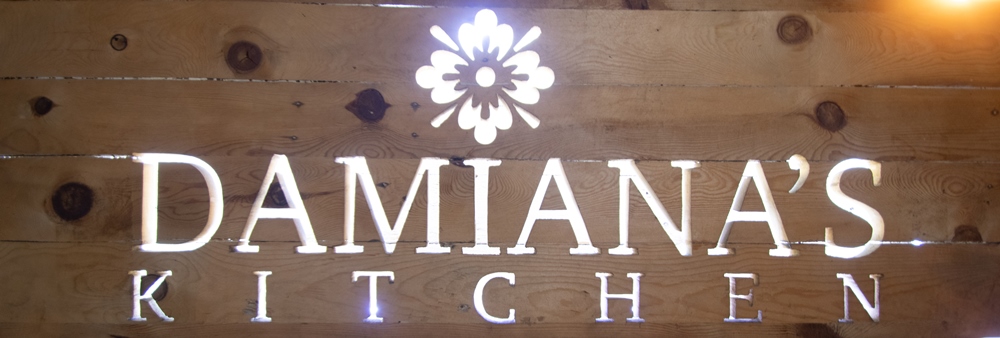
On-Location at: Damiana’s Kitchen

Christine
[Yes.] And then came Damiana’s…
RANGGO
You already had Damiana’s in Boracay, but how did that concept come to be?
Christine
We had Ti Braz Bistro and Creperie in Boracay, which was serving French food and crepes. But we saw a market to serve Filipino food to foreigners. Most Filipino restaurants in Boracay were catering more to Filipino’s rather than foreigners. We recognised that these were not really as comfortable: sometimes not a clean environment for foreigners to want to be adventurous enough to try, Filipino food.
So, I created a short Filipino menu for Ti Braz, with June Vino, and I said that, “…the food needs to be presented properly…needs to look good and it can’t look like nakabandehado lang (just all in a big bowl) … like how Filipino restaurants might present their food.”
I’m not saying that that’s bad but it’s not appealing to foreigner’s eyes -and they were our market. When foreigners came, they loved the food. They would say, “wow Filipino food is good, it’s not pala oily, it’s not pala this”. They previously had a really wrong feeling about Filipino food and that’s what we had wanted to change.
RANGGO
When you brought Damiana’s Kitchen to Manila, you expanded on the menu. How did you choose what dishes to offer?
Christine
A lot of the dishes on our menu here are favorites that my grandmother was making. She was my grandmother on my mum’s side of the family and that is why we’re called Damiana’s. She was actually the one who taught us how-to cook, when we were younger and living in Malate [Manila, Philippines]. On our free time she was teaching us how-to make Pastillas and Polvoron, and then we’d sell it in school or at the gate of our house. Being around her, and around this same table I’m sitting at here, whenever she would prepare food it was on this table, and I would sit here in the middle, and all the food would be in front of us.
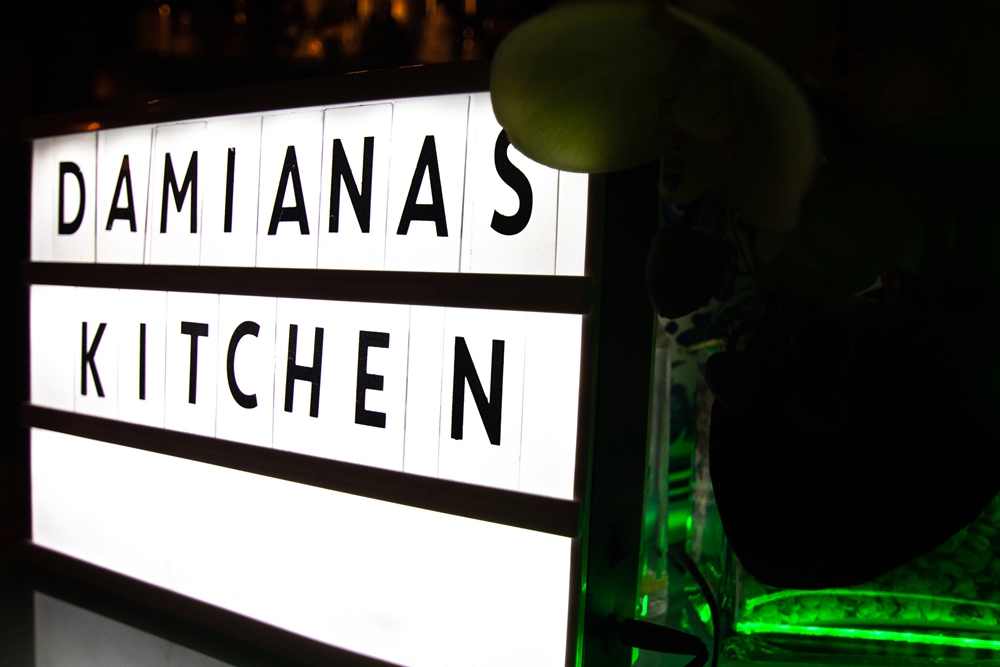
On-Location at: Damiana’s Kitchen
So the dishes that we chose when we first opened Damiana’s, were already her favorites. I had to research with my cousins “what do you remember of Lola”, (I called her mama) “what are your favourite dishes?” Many of the recipes are from memory, rather than written down and they’re presented and served with condiments today. Just how they were presented when I was eating them, when I was young.
RANGGO
So you grew up as a food lover?
Christine
Everyone around me cooks; my dad cooks, my mum cooks; she used to bake a lot. My dad was the more adventurous one; whatever he saw in the fridge he’d just come up with something. Sometimes it was a big fail. But I got the experimentation side from him. And because of all my travels, my palate is more diverse than my dad’s. And, from learning from other people, I learned French cooking from my ex-mother-in-law.
RANGGO
Was your family’s love for food what got you in to the food industry?
Christine
I think it was part of it. I actually never saw myself as a restaurateur…I always saw myself as an Actress. Whenever I ask ABS [Philippine TV network], because I know all the producers, ‘I want to be an Artista’, they tell me “You?! Christine San Diego, will actually wait for 12 hours?!” Well, I’ve done it before. When I was a student at UP [University of the Philippines] they would get me to guest for TV Shows and sitcoms.
RANGGO
Oh wow! Do you still have copies?
Christine
On Betamax only. They’re not even on Youtube or anything, so I can’t show my kids.
PART TWO: RANGGO Magazine On-Line Edition Exclusive
The conversation was so wonderful and full of insights -it didn’t stop there. Later, we got into Christine’s experience in the United States, her childhoods, environment-friendly practices and more…
RANGGO
So what made you decide to move in to the food industry then?
Christine
When I moved to the States, to San Francisco I worked for two restaurants. So that’s when I decided it was probably my calling, talaga [really]. And when I opened Bistro 110 it was more of a restaurant but then became more of a bar because of Happy Hour, we needed to not be limited to just food. And then after Flute, people said “…you know, you can be a bar opener”. Which is how Absinth and Juice Bar came along.
RANGGO
Going back to Damiana’s, [because it’s so interesting] what makes it different to the food other Filipino restaurants serve?
Christine
I guess it’s because of our taste buds, our particular palate. Food is very relative. I don’t believe that there’s only one way to cook a certain dish. Regions even in France cook a dish slightly differently, even different households cook differently; around the world. So we try to develop a recipe that everyone will accept, that will appeal to people from all regions. Like Sinigang: me, I love sour taste, so I like super sour Sinigang…but not everyone likes their Sinigang too sour.
RANGGO
Damiana’s Sinigang is so good
Christine
Our Twice-cooked Adobo; June Vino tweaked the recipe a bit but my Grandmother was already making Twice-cooked Adobo when I was young. She’d make pots and pots of it; it was easily stored because of the vinegar and lasted longer than any of the tomato-based dishes.
So the difference, really, is our palate. And training the people that cook our dishes. Even our waiters have tasted every dish, so they can describe it. We explain, this is how we make it and this is why it’s masarap. It’s a consensus. It’s not just one person saying “this is good”. It’s everyone really tasting to get dishes that everyone loves. (Christine shared some insider secrets to their dishes, which RANGGO will take to the grave).
We don’t use Baguio Oil, Palm Oil, we don’t use unhealthy oils; we use a lot of Olive oil, Canola and vegetable oil. We don’t re-use oil here and people, especially foreigners, comment on that; that we don’t smell like most Filipino restaurants because so many reuse oil.
RANGGO
We’ve never thought about it but you’re right, there is THAT smell in so many places, and it is re-used oil.
RANGGO
…talking about recycling we notice that you are taking steps to be environmentally friendly here at Damiana’s Kitchen.
Christine
Yes. We’ve already introduced steel and bamboo straws. We try to be as environmentally friendly as possible.
RANGGO
Is there any particular restaurant or dining experience that has inspired you in your career, good or bad?
Christine
Basically all the restaurants I’ve been to; there’s not one restaurant. If I like the restaurant I’ll say to myself maybe I could do something like this.
For example, when I went to Portugal I realised that Escabeche was from Portugal, not from Spain. And my Lola would make Escabeche all the time; that’s her favourite. She would make the big deep-fried fish and then she’d pour the Escabeche Sauce over the top.
But when my brother and I went to Portugal, we ate Escabeche with Sardines, deep fried sardines, which is such a popular thing in Spain or any coastal town in Europe. Even in Italy they serve deep fried fish and you eat it whole, either anchovy or sardines. So they deep fry it, make it really crispy and then, in Portugal, they serve it with Escabeche.
This got me thinking “we can do this. We can do this, either with Tuyo or Tawilis. So instead of just serving it as Tawilis let’s do Escabeche because we don’t want to be serving a big fish, that’s too big. Here it’s always served as individual servings”. So that’s how we came up with our Crispy Tawilis with Escabeche.
My inspirations mostly come from travelling. If it’s a bad restaurant, it may make me want to look again at the service in our restaurant and improve it. Because we’re still learning, learning, learning; nothing is perfect. Every time we still have to remind people what to do, remind the kitchen what to do.
I don’t believe any restaurant is always perfect, unless it’s a fast food restaurant where everything is standardised and followed by the book. No matter what you do consistency is very hard to achieve from service to food, so you always have to be there. To say “Bakit ganito? Bakit ganyan yung taste? Ano ang iniba nyo? (Why is this like this? Why does it taste like this? What did you do differently?) Every day I’m tasting, every day.
RANGGO
So you would rather be hands on, than get someone in to manage Damiana’s Kitchen; that’s what makes it special?
Christine
Yes. Like I said, it’s still our palate, diba. Like with District in Boracay, it’s our palate that they’re also following, it’s not theirs. I know your way of making this but that’s not our way. So this is the way we want it, and you follow this.
RANGGO
What process do you go through to train your staff?
Christine
I ask them first if they’re really dedicated to the job or if it’s just a job they’re doing because they need to survive. They really need to love the job. Most of the time, especially in the Philippines, you know that a lot of the time it’s just a job they need to do. With the kitchen, you at least know it’s a job they do because they love to cook.
With the Wait Staff here, that’s difficult; they can always say ‘oh I can do something else’ or ‘I’m just doing this as a side line’. It’s very hard for me to instil that value wherein Customer Service is very important and that you need to really keep your eyes open, but it’s hard. It’s constant monitoring, telling them what to do. No matter how many times you train them or sit them down and say ‘this, this this’, they forget. There’s a few, also that’s why I keep them for a long time, because they just really love the job. They like the fact that they’re meeting new people and serving them.
RANGGO
Do you think they try to influence the other staff, who aren’t quite so interested in their job?
Christine
They try to but it’s really very hard. In my 23 years here in the Philippines doing this, it’s still hard. That’s why we always ask: why is it when Filipino’s go abroad their work ethic becomes so different than from what it is when they’re here?
RANGGO
Yes, why is that?
Christine
I still can’t answer that
RANGGO
Maybe because they’re scared to lose their jobs and it’s hard to find another abroad?
Christine
But it’s very hard to find jobs here too.
RANGGO
Yes, true. Maybe it’s because here they also have families they can go home to.
Christine
In the States I meet a lot of Filipino’s but the way they work there, I’m like “Wow”. And most American’s love hiring Filipino’s because we’re so efficient; super-efficient and we get the job done faster than anyone else. And we’re very loyal. So I just don’t get why I don’t get that from staff here too.
RANGGO
Since you’ve travelled a lot, do you notice the Service Standards? Are they better or worse here in the Philippines?
Christine
Well, we’re more hospitable and friendly compared to Europeans. European service sucks.
The best service you get is in the States because, for them, that’s crucial. Simply because it’s very much a litigation culture in the States; “I’ll sue you if you don’t give me this, I’ll sue you if I don’t get this and that”. So it’s a very consumer driven market there. Unlike here, they don’t care; because the owners are not there to see it a lot of the time.
What’s nice is that Filipino’s are very hospitable, very friendly and always smiling.
RANGGO
What is your criterion for excellent restaurant staff and customer service?
Christine
It’s everything. For example with my crew, for bars it’ll all be because of service. With restaurants, it has to be the food and then the service. So if we visit a restaurant with amazing food but terrible service, we won’t go back there.
RANGGO
How about with Hotel stays?
Christine
It has to be the rooms, of course; the cleanliness, housekeeping, the staff and the environment of the hotel.
RANGGO
What are your Don’ts when it comes to restaurant service?
Christine
The service staff need to focus, they always have to be on their toes; they can’t be too relaxed. Never forget that. But it’s not about ‘The Customer is always right’ because that is not always true.
RANGGO
Oh we totally agree with that
Christine
But staff need to be on the ball; full on service-focused and attend to their needs
RANGGO
What advice, or words of wisdom, can you give to people in the restaurant or bar business?
Christine
Just don’t lose focus on your goals. Focus on why you wanted to be in the industry to begin with. Was it just to make money, or to actually be successful in satisfying customers with both service and the food, or cocktails, that you serve?
Some people get in to it because they think it’s so glamorous to own a bar and yet they forget all the important aspects of it. It’s not just the marketing or themes, or whatever. It’s about giving the right service. So don’t lose that, don’t ever lose that.
RANGGO
And for a business or restaurant that is just starting or struggling to keep afloat, any advice?
Christine
There are so many aspects in the business; why are they struggling? Is it because of the staff, is it the quality of the food, is it that they are losing money because people are stealing from them? There are so many aspects. So they need to just inspect and figure out where they are losing and then improve on that, or make changes.
RANGGO
What advice would you give to restaurant staff, the waiters, bartenders and chefs?
Christine
I think that’s the same advice; don’t lose your dedication to your craft. No matter what. They think here in the Philippines that it’s just a job; that it’s not a career. But it should be a career. It should be treated as a career because that’s what it is.
RANGGO
Do you have one customer review that stands out, that is most memorable?
Christine
There wasn’t really a specific one, but there were a few from foreigners, which was why we wanted to pursue the Filipino Cuisine more. It was mostly because the foreigners were saying “Wow, it’s good pala ..parang…you can compete with all other South Asian Cuisines”. Because everyone’s always talking about Thai Cuisine; it’s Thai, Thai, Thai. But, hello! Their TomYum is like our Sinigang, their Pancit is like our Pancit. Actually, our Pancit is more flavourful. So, we were like we can do this.
RANGGO
Returning to food; what is your favourite dish at Damiana’s Kitchen and why?
Christine
My favorite would be our Oxtail Sinigang. And there is a backstory to that. Sinigang was never served with Oxtail here in the Philippines but when I was in the San Francisco, in the States, I really wanted Sinigang one day but I didn’t have the right meat for that. I only had Oxtail, which was for the Kare Kare. I didn’t want Kare Kare, I wanted Sinigang. So I thought maybe I should experiment.
RANGGO
Ah so again, a happy accident?
Christine
It actually turned out good, because you have the gelatinous flavour, there’s more flavour because of the bones and because of the fat, and skin of the Oxtail. So it became more a flavourful stew. So that’s my favourite and of course, after that, our Twice-cooked Adobo.
RANGGO
We love the Twice-cooked Adobo
Christine
Then you have to try the new one, the Pochero (47:00)
RANGGO
We love Pochero too!
Christine
The Sizzling Pochero; it’s really good
RANGGO
We’re definitely due for another visit to Damiana’s Kitchen! Thank you so much for talking to us. It has been so inspiring to hear about your businesses and experiences here and we truly look forward to coming back to Damiana’s to try your new dishes and our favourites.
Damiana’s Kitchen is located at: 110 C. Palanca Jr. St. Legaspi Village, Makati City, Philippines. You may contact them at (02) 818 1551 or visit Facebook.com/damianasfilipino for reservations, delivery, catering and group functions.




